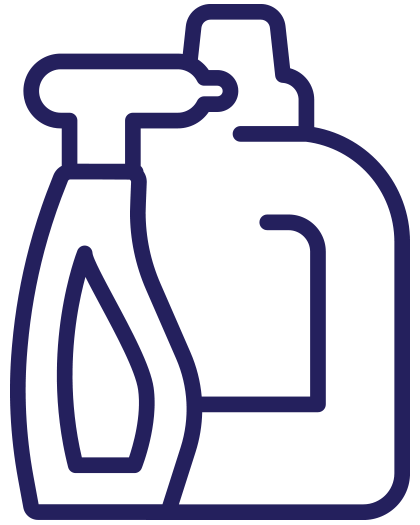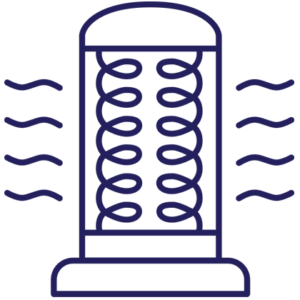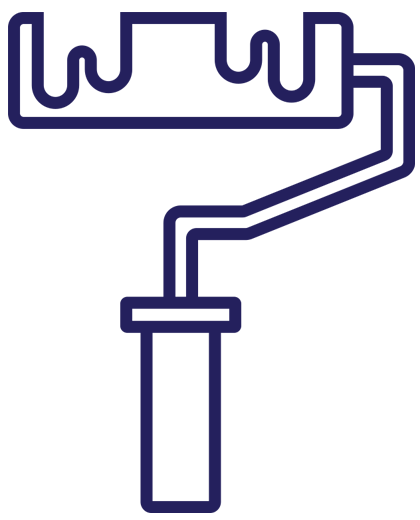They live in all of our homes, resting under sinks, sitting in cabinets, and stored in laundry rooms—cleaning and household products that are dangerous and potentially deadly. The third week of March is National Inhalants and Poison Awareness Week. While it was primarily created to bring awareness to the abuse of these products, there’s another factor to consider, accidental poisoning. Every day, cans of cleaning spray and insecticide sit, usually unguarded, in our homes in reach of our children.
Who Is Being Poisoned?
Over 300 children are treated in emergency rooms around the United States each day for accidental poisoning, and at least two children die. However, children aren’t the only ones at risk. Everyday household items that you might not consider dangerous carry certain risks for people of all ages. It only takes one accident to cause permanent damage or even death, so we thought we’d call on Dr. Dad for tips on how to keep your home and your children safe from accidental poisoning.
Over 300 children are treated in emergency rooms around the United States each day for accidental poisoning, and at least two children die.

What Could Be Poisoning Us?
The first step in protecting yourself and your family is knowing what substances could potentially cause harm. Of course, the first thing that comes to mind is cleaning products.
Oven cleaners, cleaning solutions, disinfectants, furniture polish, and stain remover are all dangerous if ingested or inhaled. What’s more concerning is that many of these companies aren’t required to list their ingredients on the bottles or cans, which leaves you in the dark. Even products considered to be “all-natural” or “green” can be dangerous.
Other household items that might not come to the top of mind are things like air fresheners, space heaters, flaking paint, and flea and tick products. Space heaters or gas heaters can often leak Carbon Monoxide.

Carbon Monoxide poisoning is a condition that sets on very quickly, often with little to no warning or symptoms. Symptoms that do present themselves are often “flu-like” and easy to discount as something less concerning.

For most recently built homes (1980’s and later), the paint used is usually non-toxic; however, if you live in an older home with flaking paint, the paint likely contains lead. Young children could peel the paint off and put it in their mouths leading to lead poisoning. It’s also possible to contract lead poisoning by inhaling the particles that the paint releases.
Older homes also have the potential to contain asbestos. Asbestos was once used to insulate homes and buildings until it was found to contain carcinogens that cause mesothelioma. If you suspect your home contains lead paint or asbestos, you can have it tested. If the test comes back positive, it’s likely an extraction team will have to come and remove the substances.
As wonderful as they smell, air fresheners can contain toxins that accumulate in the body over time. Even if the product isn’t inhaled or ingested to a dangerous degree all at once, years of exposure can affect reproductive health, and hormone development, especially in children.

An excellent alternative for air fresheners is non-toxic scented candles. But before you light that wick, jump over to our blog about burn prevention and treatment to read up on ways to stay safe.

While they might be perfectly safe for your furry friends, flea and tick medications can cause nerve damage in humans. Exposure can also lead to behavioral problems and cognitive and motor development delays.
What Can We Do To Prevent Poisoning?
So now that you have an idea of what to look for in your home, the question becomes; how do we protect ourselves? Luckily there are some easy preventative measures you can put in place to ensure the safety of everyone in your home.
- Store household cleaning products and aerosol sprays on higher shelves and cabinets.
- Use safety latches or locks for all cabinets containing cleaning or other chemicals.
- Keep cleaning products in their original bottles. If you recycle old bottles or jars to put cleaning products in, make sure they are clearly labeled.
- When you’re cleaning or using household chemicals, keep a close watch on the bottles or buckets if kids are around.
- Never spread insect or rat poison on the floor, and do not use insect sprays on furniture or mattresses.
- Keep laundry and dishwasher supplies out of sight and in a locked cabinet.
- Laundry and dishwasher pods are more dangerous than other detergent types. If you have young children, consider switching to liquid or powder instead.
- Keep a list of emergency numbers like poison control, your primary physician, and the closest emergency room. Make sure the list is easily visible for caregivers and babysitters.
If you find yourself in a position where you think someone has been poisoned, there are some signs to look out for. Burns around the mouth and lips, breath that smells like chemicals, vomiting, trouble breathing, confusion, and drowsiness, are all signs of poisoning. Many signs and symptoms can mimic other conditions, so you should also investigate the surrounding area for empty bottles, stains on the carpet or floor, or other suspicious activity.
Misuse of Inhalants and Poisons
While most poisoning incidents involving inhalants are accidents, we can’t ignore the percentage that isn’t. Inhalant abuse and misuse is a continually growing problem in American households, especially with teens. Many of the agents mentioned in this article are often used as a cheap or free way to get high. Educating youths early about the dangers of inhalant abuse is one way to help prevent habits from developing. Empty cans hidden in closets or under beds could be a sign that your child is misusing inhalants.
Final Thoughts
The risk of poisoning from inhalants and common household items can feel overwhelming, but it doesn’t need to. You can prevent accidental poisoning from these substances if tips like the ones above are observed. Of course, if you find yourself in need of emergency care, your Neighbors are only a short drive away.
For more safety tips for kids, read all our Dr. Mom & Dr. Dad articles.
*If you think you know someone who might be struggling with inhalant abuse, you can visit places like inhalant.org for more resources on how to help.

Back to Blog